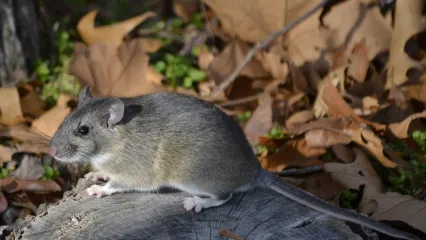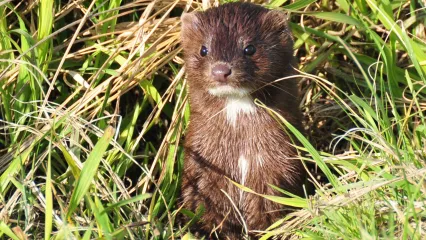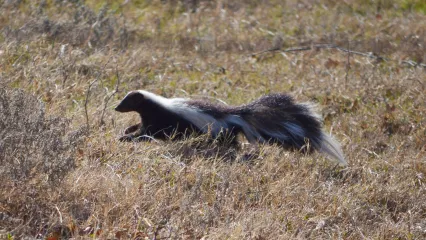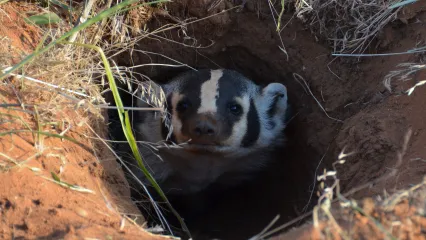
Description
Woodrats are medium-sized rodents, but are rather large when compared to other mice and rats. Eastern woodrats often exceed one foot in length. They also have long whiskers, large naked ears and prominent eyes that allow for nocturnal activity. They are gray-brown to bright cinnamon-orange with black tipped hairs and have a cream belly and feet. The long, haired tail is similarly bicolored – dark brown on top and cream on the bottom. The tail is nearly one-half the total body length.
Size
Often exceed one foot in length.
Habitat
Eastern woodrats are locally known as pack rats or trade rats. These nicknames come from the caching or hoarding of items. This behavior is seasonal, usually occurring during the fall and winter months. Woodrats continually add sticks, leaves and other building materials to their house. The stick houses are often one to four feet tall and are frequently found in brush piles, under fallen trees, at the base of trees, or in tangles of vegetation. In rocky areas, smaller stick houses are built in crevices or along rock ledges. Woodrat nests have also been found in the lower branches of juniper trees.
Life Cycle
Like other rodents, woodrats have long, sharp incisors and are constantly nibbling and chewing. Primarily herbivores, woodrats feed on berries, stems, seeds and buds of a multitude of plants. They will also opportunistically feed on snails, grasshoppers and scorpions. Though capable of breeding throughout the year given favorable weather, woodrat reproduction is most prominent during winter months. Females give birth to 2-7 young 32-38 days after mating. They can have up to four litters a year. When first born, the young are blind but have whiskers, claws and sharp incisors. They are dependent on the female and their protective nest.


